The photographic charms of South Korea
Posted on 3rd May, 2019
I would imagine most of us photographers have a mental wish list of places we’d love to visit and photograph. I know I do, and I’ll freely admit that South Korea was not on that list. However, an invitation from an old friend of my husband’s to visit them in Seoul soon materialised into concrete plans to visit; and we spent the best part of three weeks there last November.
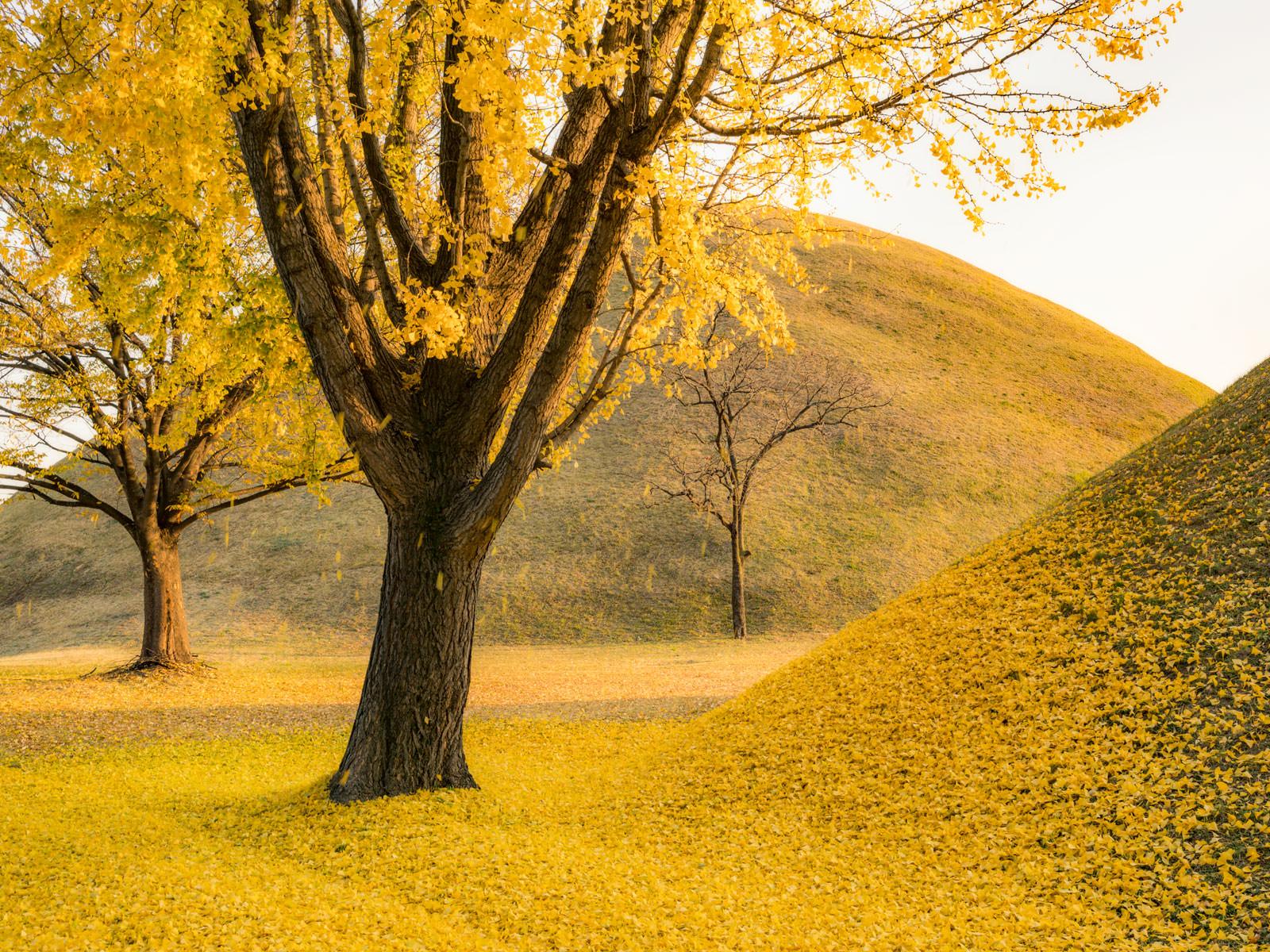
My knowledge of the Korean peninsula was fairly hazy. I understood a bit about the political situation there, was aware of the bitter war there just after WWII and I knew about Bae Bien-U. I’ve owned his book, Sacred Wood, for a good few years now. It consists of a series of mesmerising and hauntingly beautiful photographs of Korean Pine tree forests. It had also caught the imagination of my husband, Rob, and it was certainly an extra motivating factor in our visit.
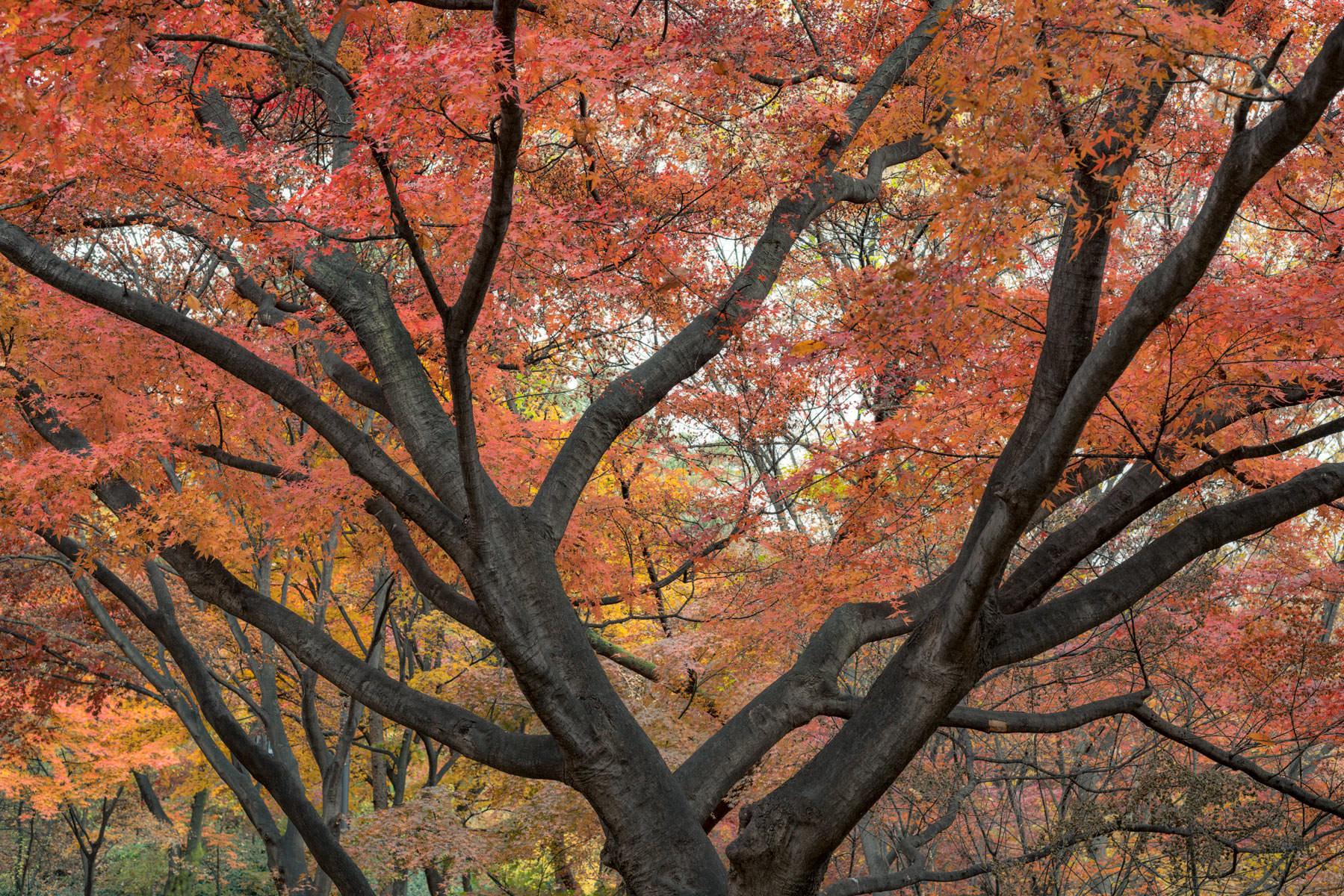
The more I researched the landscape of South Korea, the more enticing it looked – so much so, we decided to abandon our original plan of combining it with a week in Japan. At the same time, political tension in the area was rising to unnerving levels and we started to wonder if our trip would have to be abandoned. Thankfully, despite things being a little tempestuous at times, we were able to travel as planned.
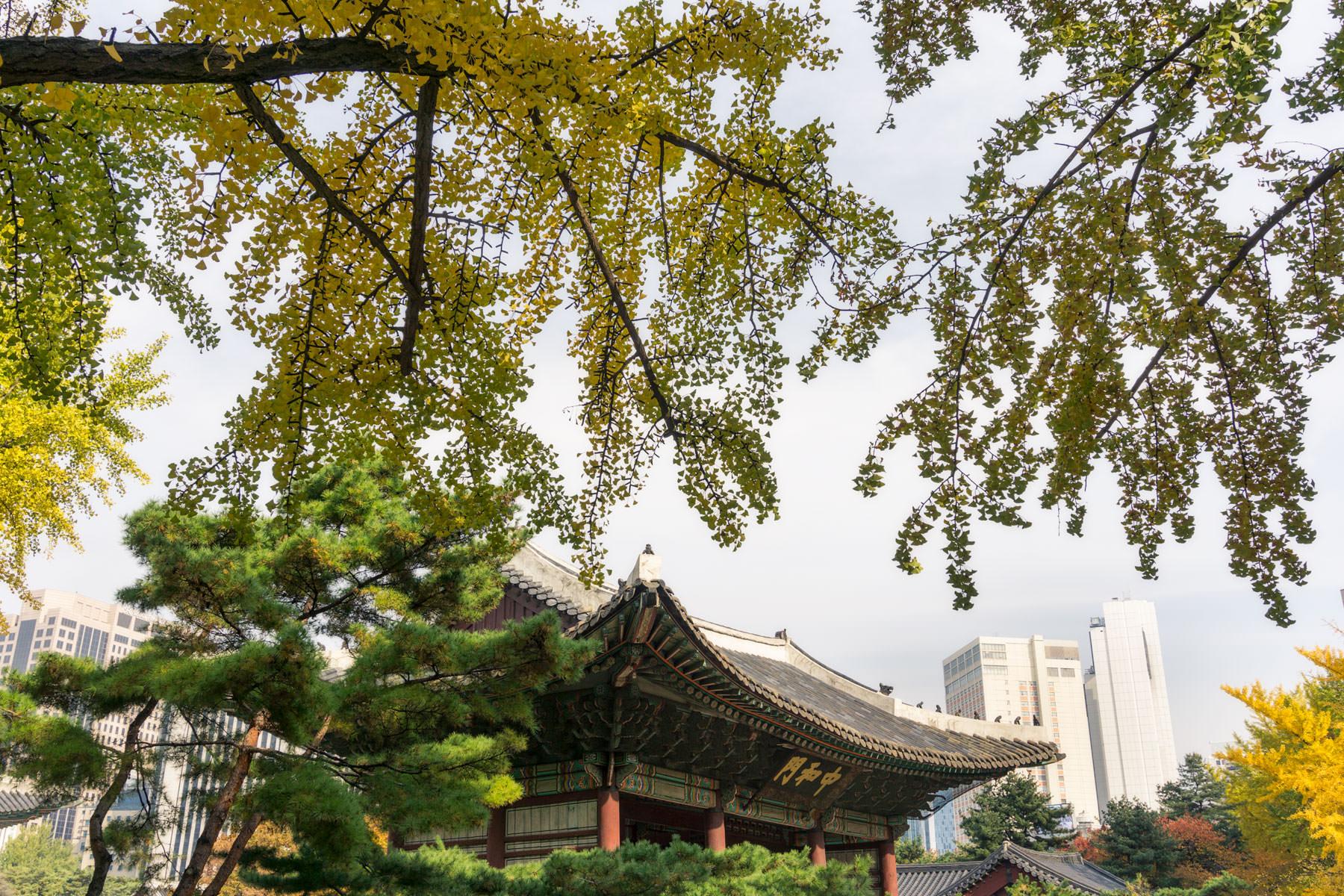
We spent most of our first week in Seoul. What an extraordinary city! It is massive! I really had not appreciated just what a vast area is covered by the city (and its suburbs) and it is very densely populated (significantly more so than, say, London). Architecturally, it is a fascinating place, albeit predominantly modern. The assault on the senses was surreal, with a bizarre mix of architectural styles, liberally interspersed with wonderful arboreal delights!
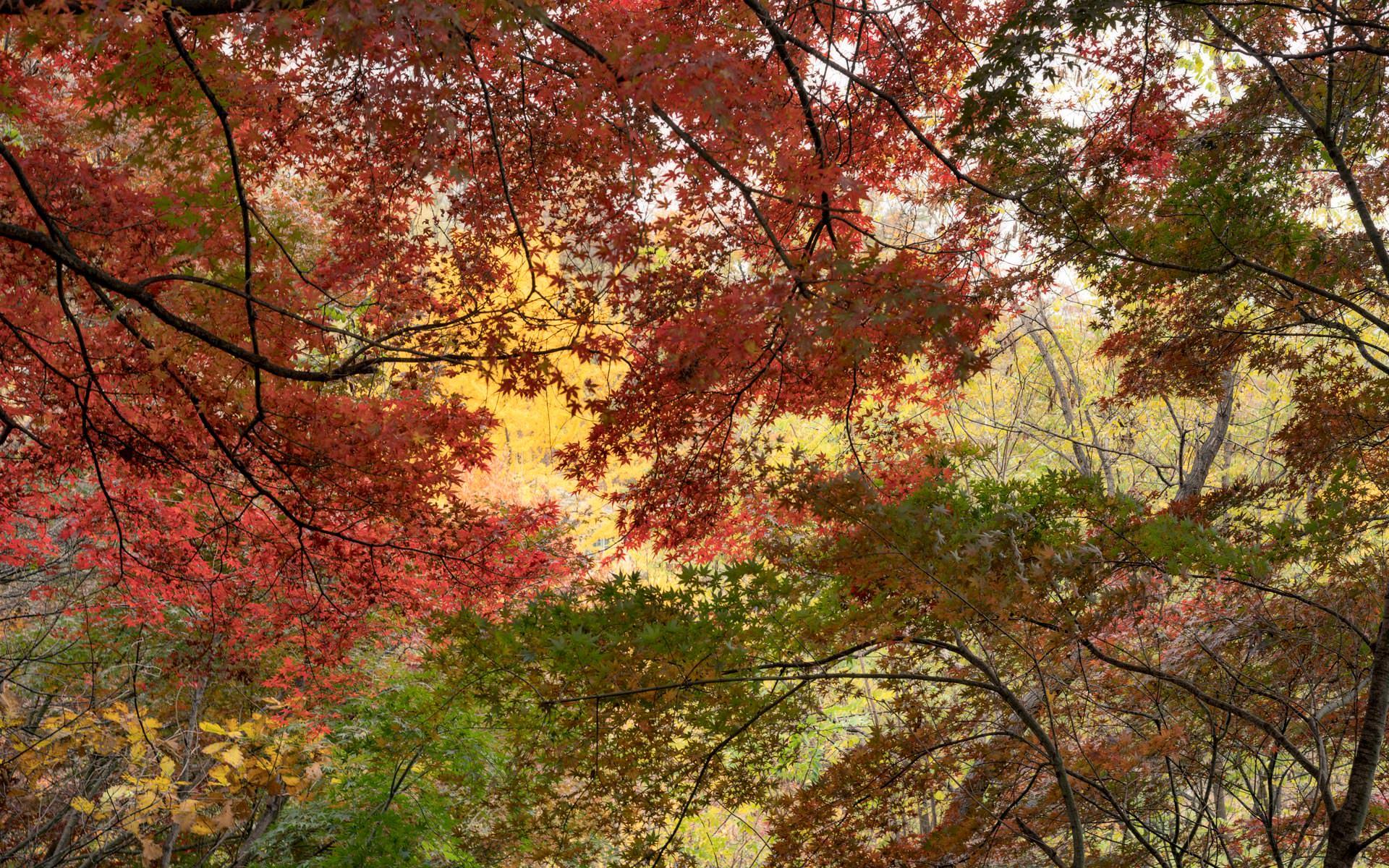
There are several parks within the city, as well as plenty of smaller palace gardens, and trees grow throughout the city. We were charmed by the ubiquitous Gingko tree, with its fabulous autumn foliage. They thrive in urban environments, being fairly tolerant of pollution. Equally striking were the wonderful Korean Pine trees and a mass of different kinds of Acers, many of which were still in their best autumn colours. Pollution and haze meant that longer views were a good photographic proposition. However, the eclectic mix of architectural styles and the amazing variety and colour of the autumnal trees more than made up for this.
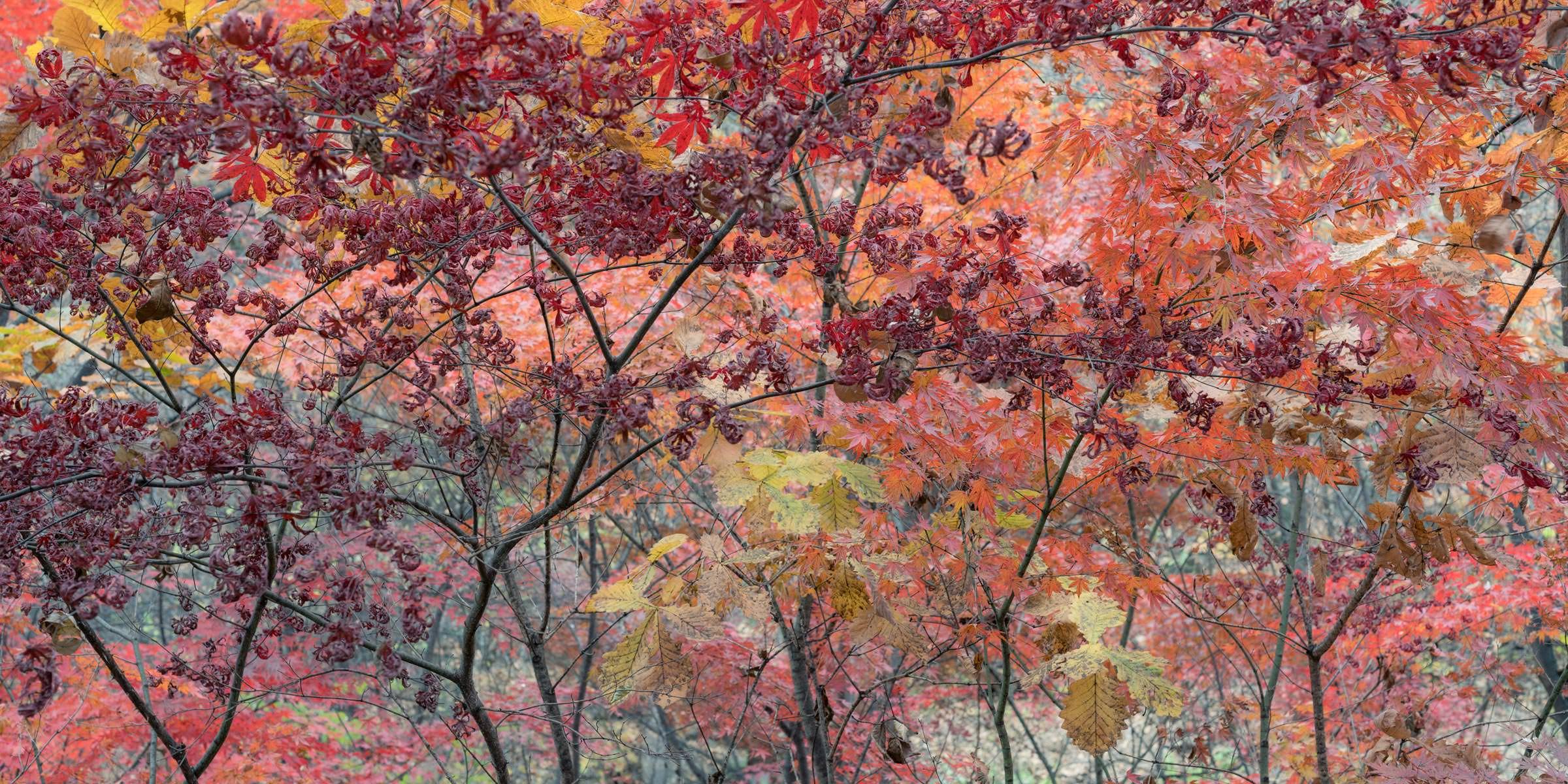
No visit to South Korea is complete without an official tour of the DMZ (demilitarized zone) but, although a fascinating thing to do, it was not something I found particularly interesting photographically – largely because of being constrained to commercialised areas and, of course, there are strict regulations about what you can and cannot photograph. Even more interesting, and also extraordinarily moving, was a trip to see some of the Korean War battlefields by the Imjin River. Our guide, local journalist and historian, Andrew Salmon, gave us an incredible insight into the sheer horror and brutality of this war, and the remarkable bravery of those who fought. Again, it was something that was hard to capture photographically, but it was a highlight of our trip.
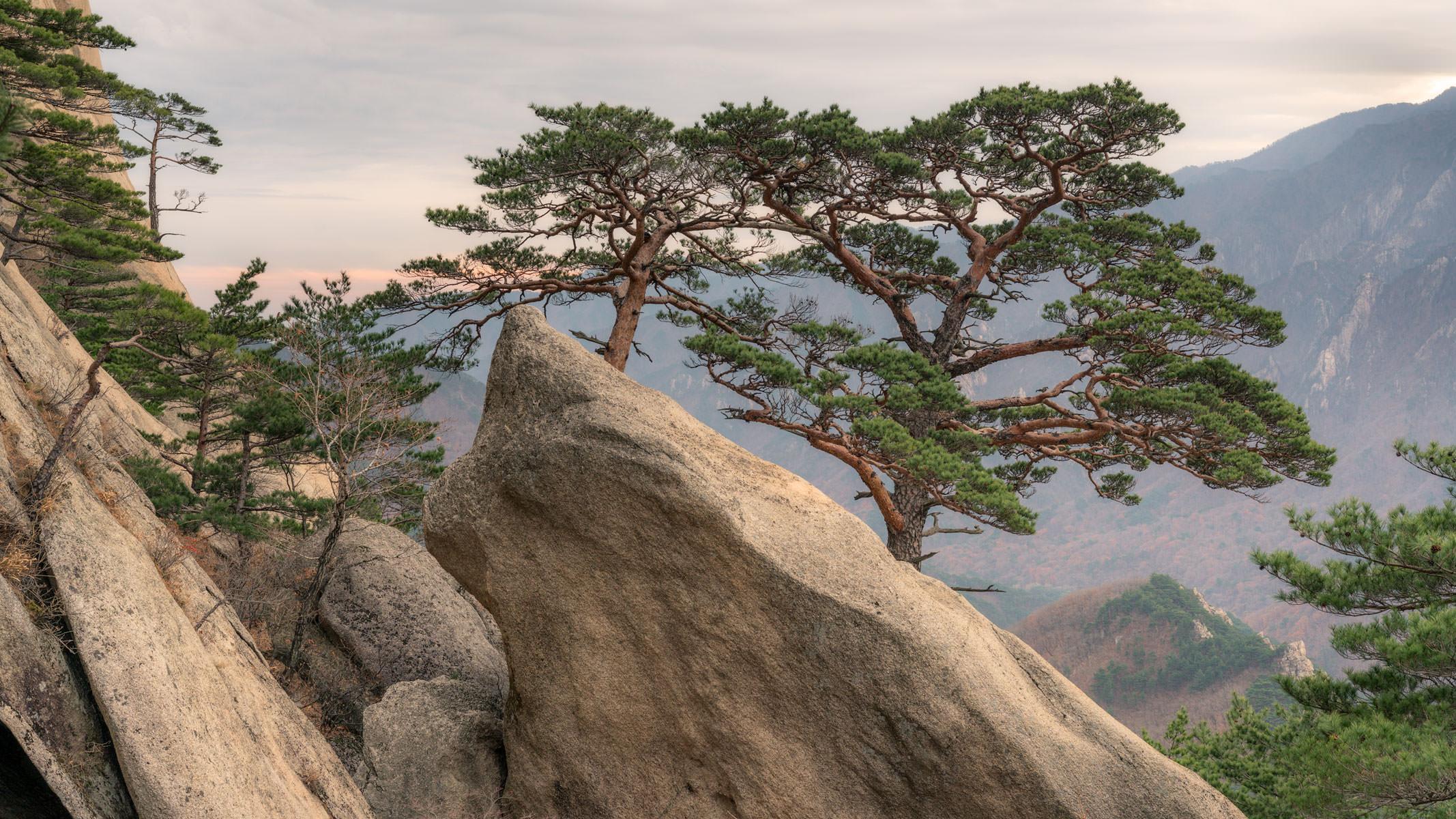
We’d not made any concrete plans beyond our first week in Seoul and, whilst there, came up with a rough idea of some of the places we hoped to visit. First on this list was Seoraksan National Park in the north east of the country. Considered to be one of the most beautiful and iconic national parks, we knew it was an extremely popular location, particularly at weekends, with hiking being the national pastime for Koreans of all ages. So we made sure we timed our visit during the week, travelling by bus from Seoul. Even so, we were taken aback by how many visitors were there.
The scenery did not disappoint. The park is a mass of heavily forested mountains, dotted with extraordinary granite rock formations, and full of steep sided, twisted gorges. Much of the terrain would be barred to all but the best climbers, were it not for an impressive network of walking trails and stairs that allow you to scale steep side rock formations and gorges. We made the most of these over our two days there, enjoying some extremely steep ascents and descents. It was hard work!
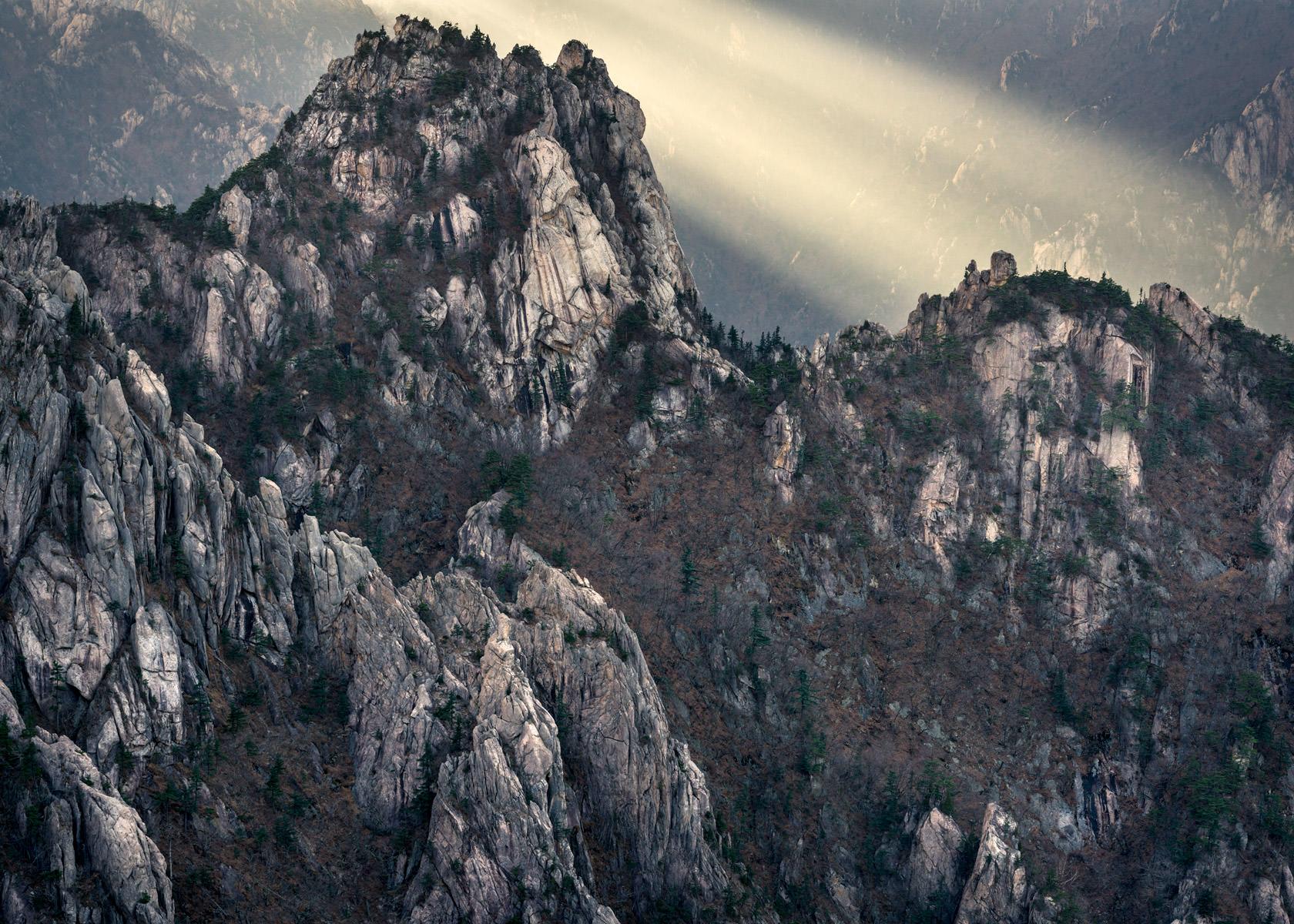
We started at first light each day, that way beating most of the crowds. It’s a stunning place and, although a large proportion of trees had lost their leaves already, there was still plenty of colour to be enjoyed, as well as a number of temples, Buddha statues and rock carvings. The bird life was fantastic as well, with a mixture of familiar species (such as nuthatch) and new discoveries for us, including the colourful Varied Tit and the very cute Japanese pygmy woodpecker.
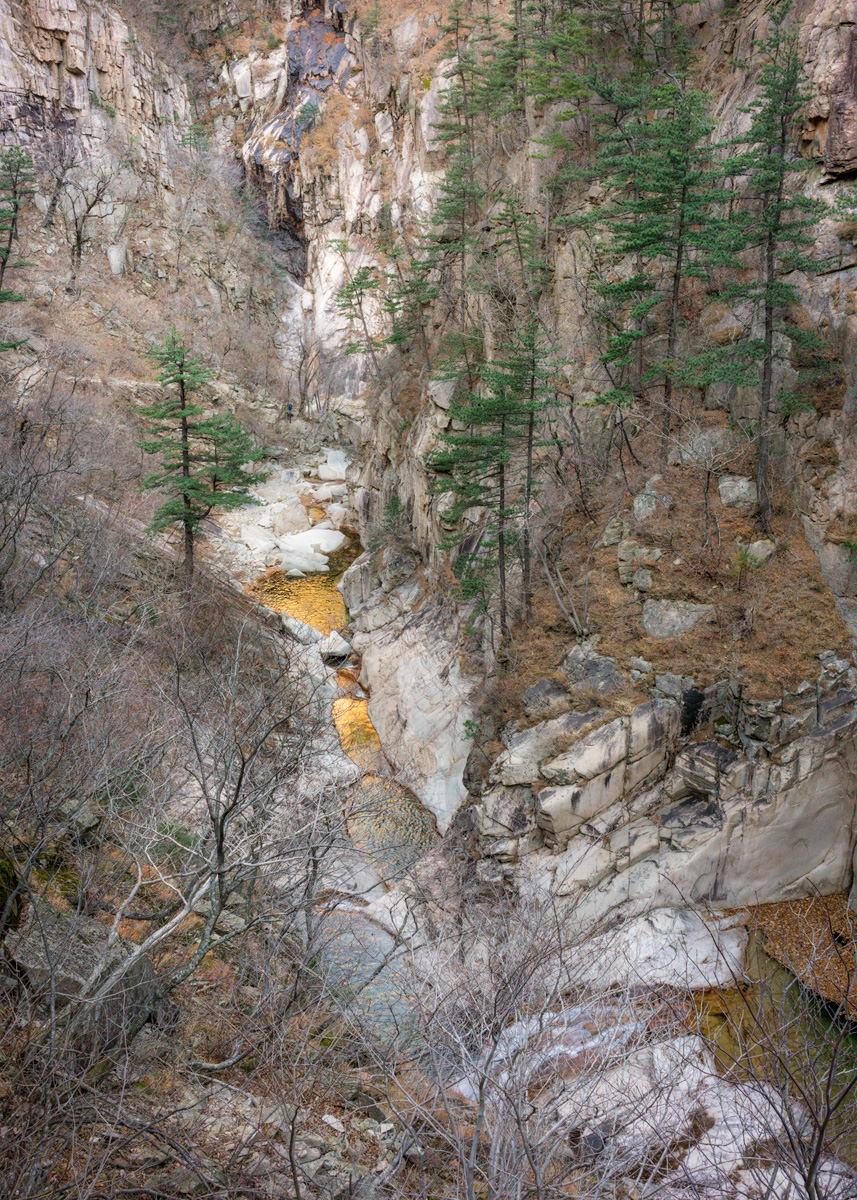
Our first day was fairly overcast, sometimes with rather flat light but, at other times with some interesting bursts of light breaking through. Our second day was pretty much wall-to-wall sunshine, and extremely cold – not ideal, particularly as we were often deep in sheer-sided gorges. It was beautiful but, again, not the easiest conditions photographically. I’d love to have had more time to try to get my head around this incredibly complex landscape, as well as to experience it in softer light. Still, I did manage to find a few compositions that I was pleased with and that really describe the nature of the rocky landscape there.
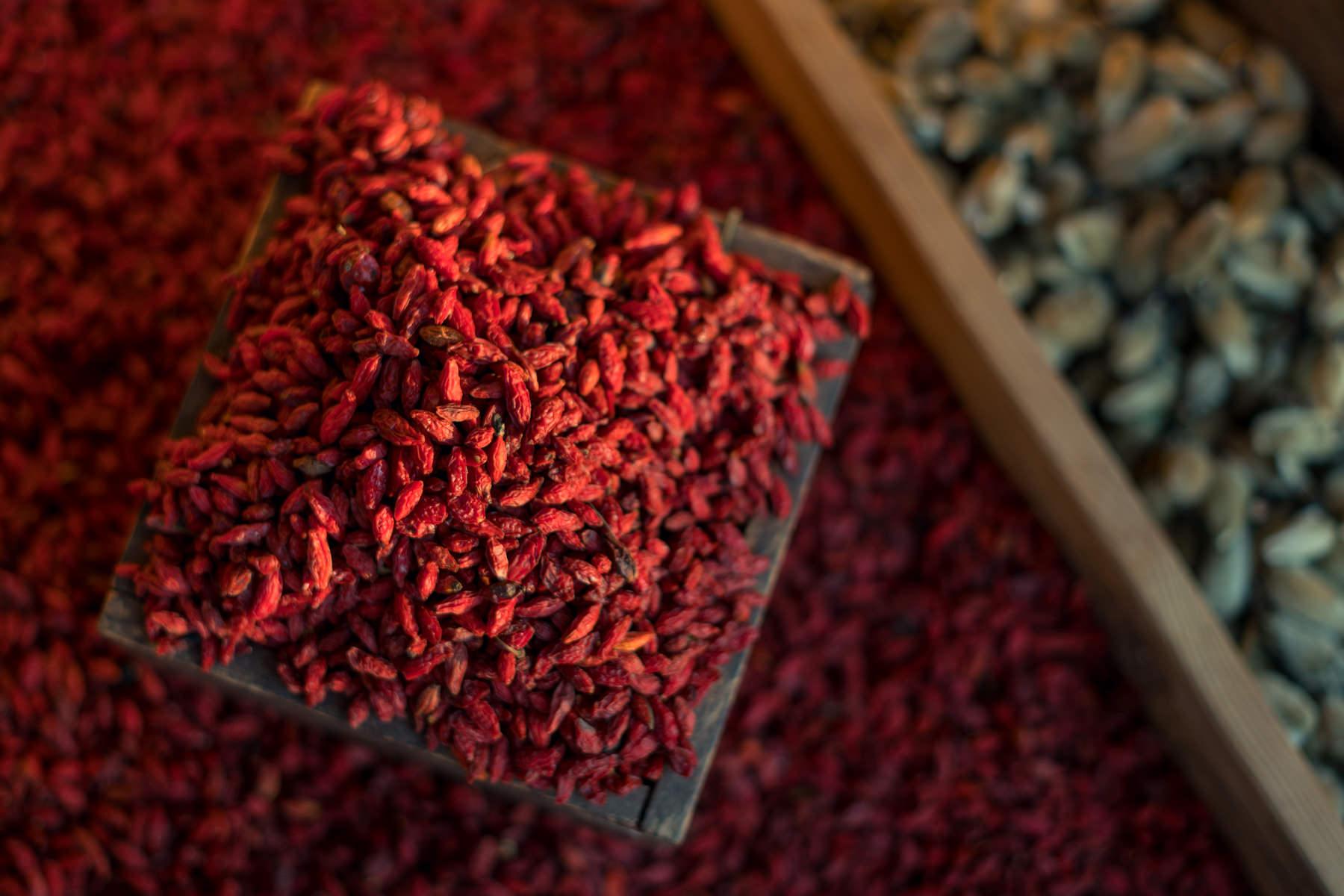
Next stop was another national park, towards the south east of the country, called Juwansang. A combination of three different buses got us there for mid afternoon and we looked forward to a lovely walk in amongst more mountainous scenery, albeit of a gentler kind than Seoraksan. We were bemused to be informed the park was closed – it took a bit of working out that this was the case, because there were no English speakers around the park entrance. However, it transpired there had been an earthquake on the coast. As we were to discover, South Korea has a very risk-averse culture and we presumed that they were worried about possible aftershocks dislodging rocks onto the trail.
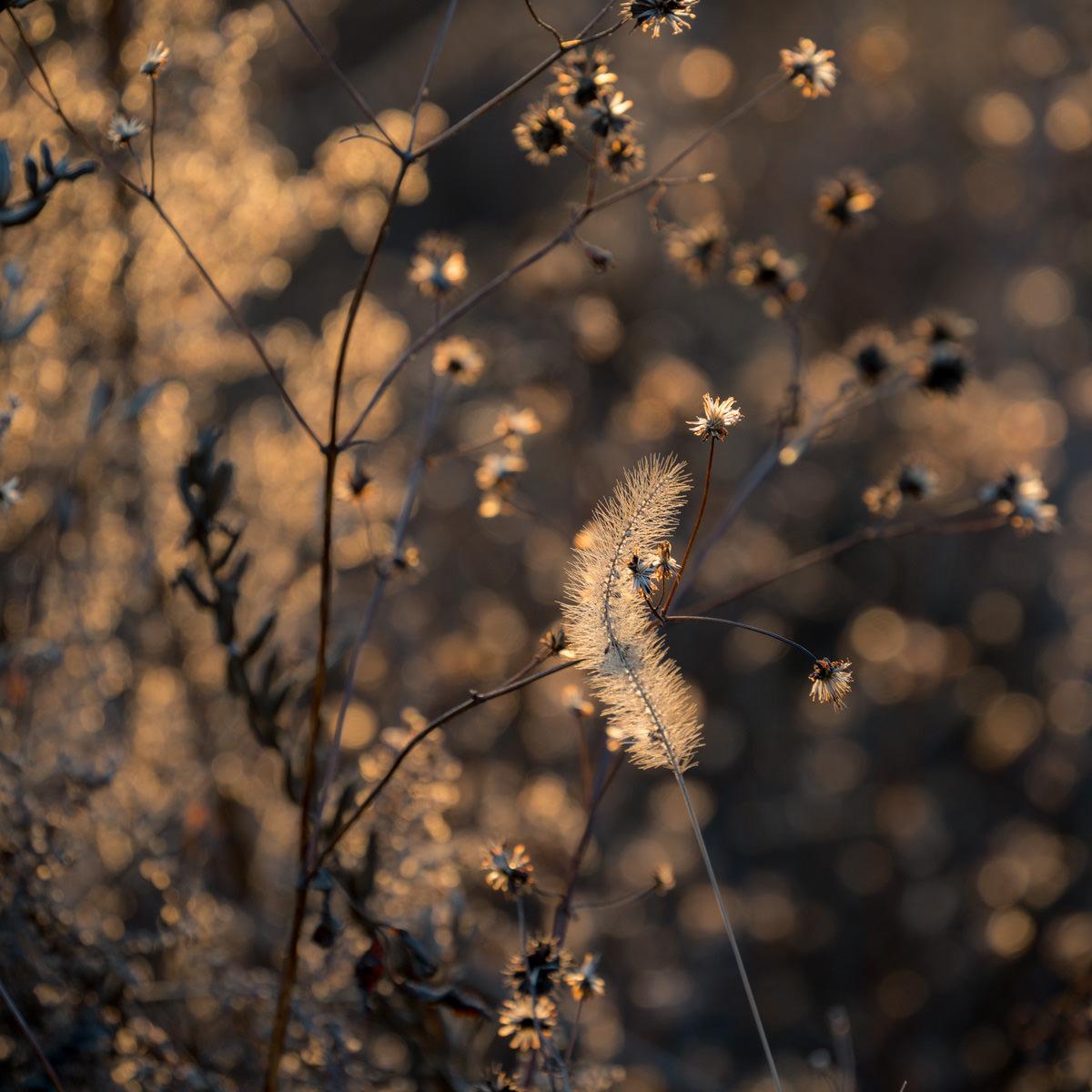
The light was glorious and it was somewhat frustrating only being able to get a glimpse of what we knew would be yet more spectacular scenery. We decided to stay over and hope that we could get into the park the next day. In the end we had thoroughly enjoyable stroll around the village, looking at and photographing various food stalls and some lovely autumnal grasses in the surrounding fields. Another dawn start the next day, a bitterly cold an clear morning, and another failed attempt to get into the park. We were sure they were being overly cautious but we had no choice but to accept defeat and move on.
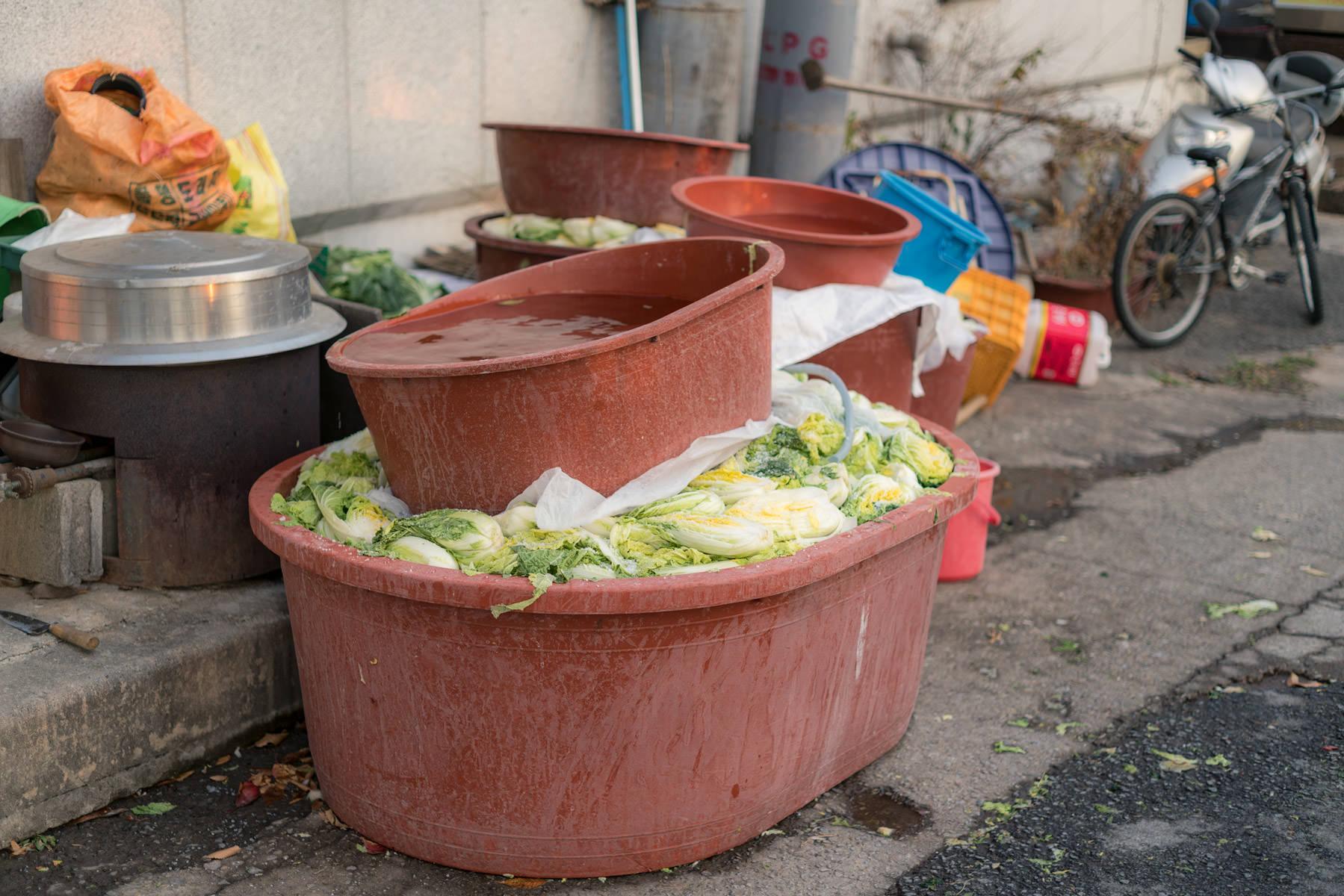
Several people had recommended the historical city of Gyeongju and it was a relatively quick and easy bus journey to get there, so we headed off, a day earlier than planned. Gyeongju was the ancient capital of the long-lasting Silla Kingdom (57 BC to 935 AD). One of the major attractions here are the Royal Silla Tombs – wonderfully curvaceous, grass covered burial mounds – in essence, Korean’s answer to the pyramids. These proved to be extremely photogenic, a delightful foil for the trees growing amongst them. The tombs are in parks across the city, with buildings very nearby in some cases.
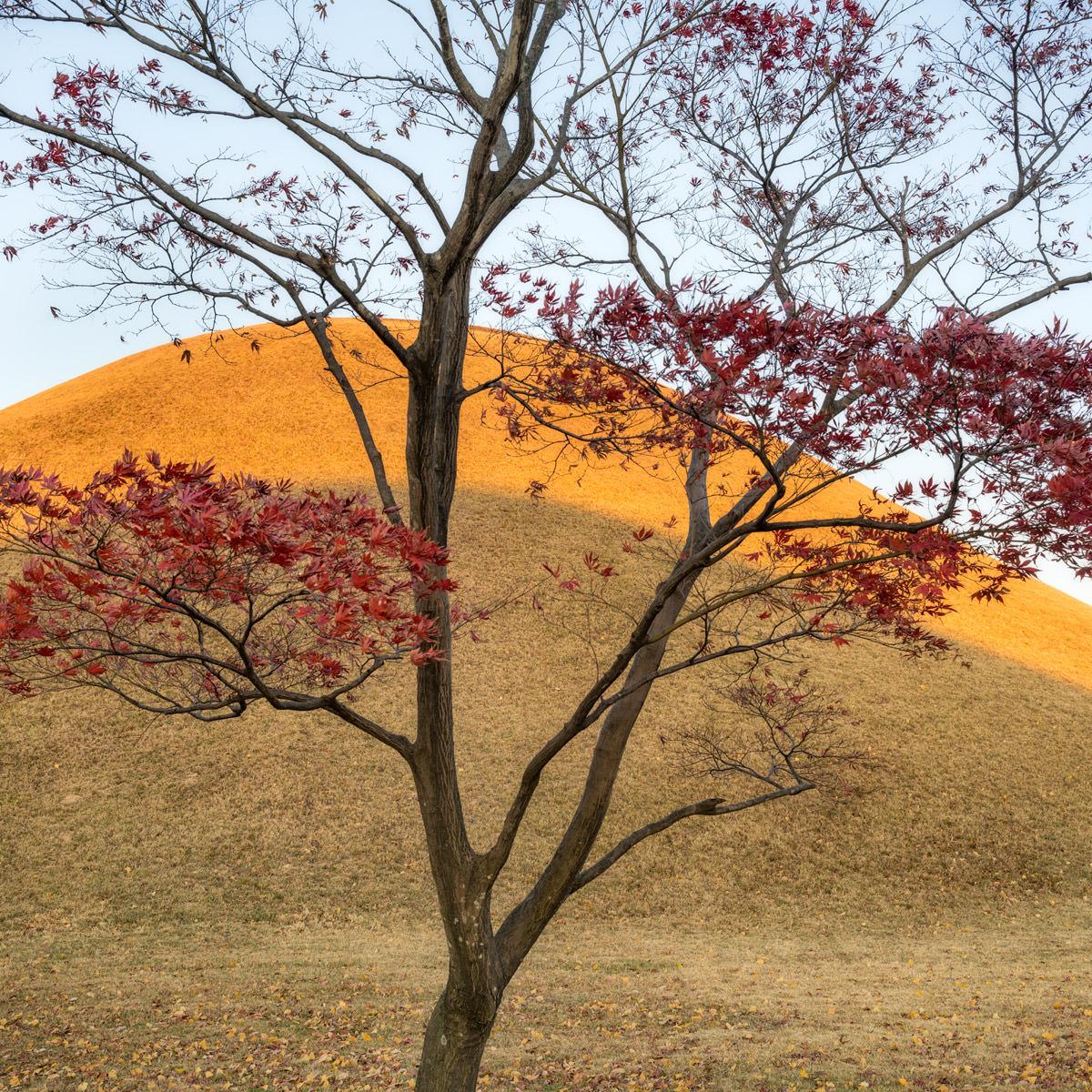
The outskirts of Gyeongju are home to numerous visitor attractions – too many to take in on a two day visit but we opted for the UNESCO World Cultural Heritage site of Bulguksa Temple and Namsan mountain range. The temple complex was the most impressive we saw during our time in Korea but, like most, had been restored and renovated on many occasions since it’s initial incarnation in 528 AD. A large part of its charm was down to the stunning parkland in which it was situated and, once again I found myself drawn to photographing a colourful array of Acer trees.
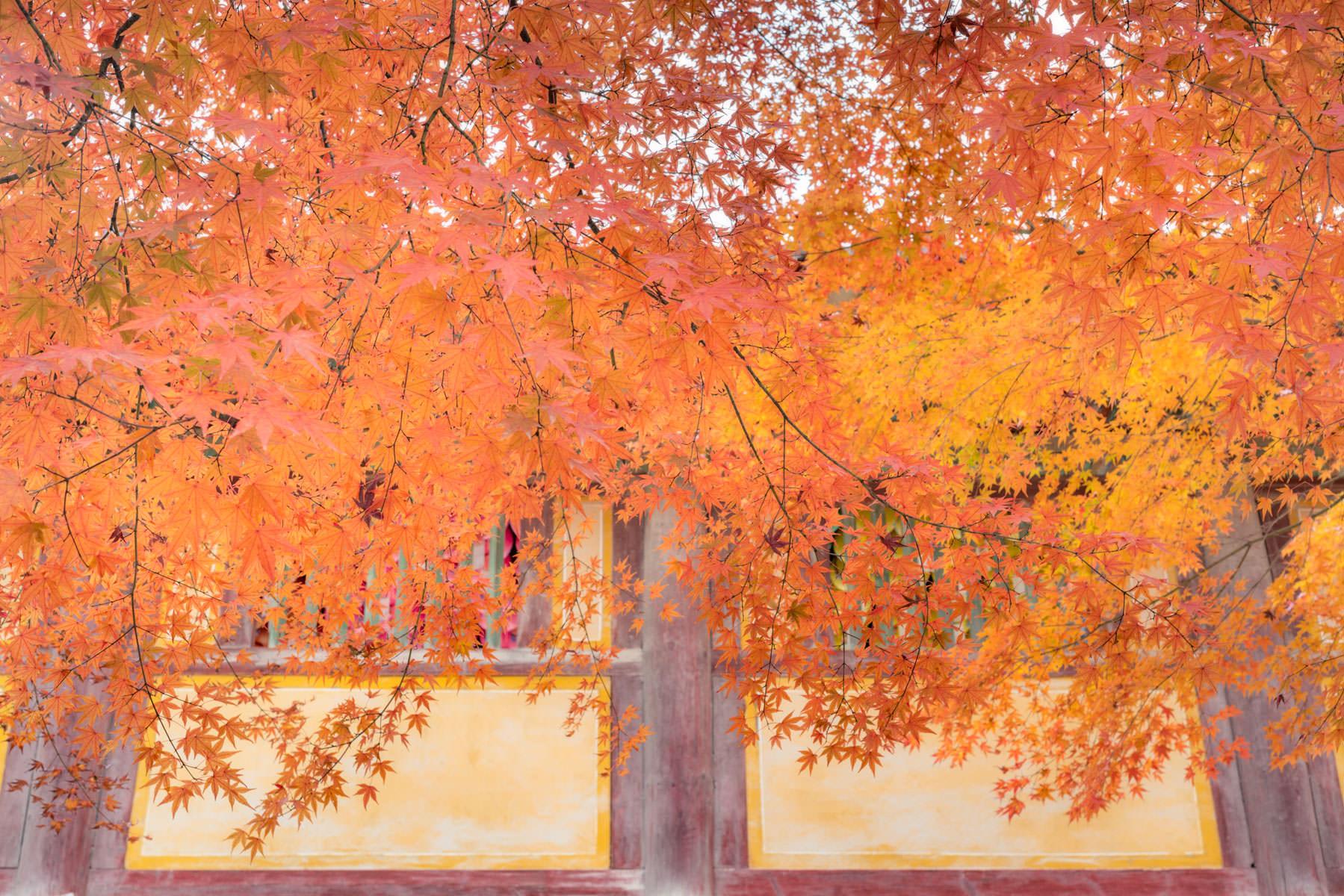
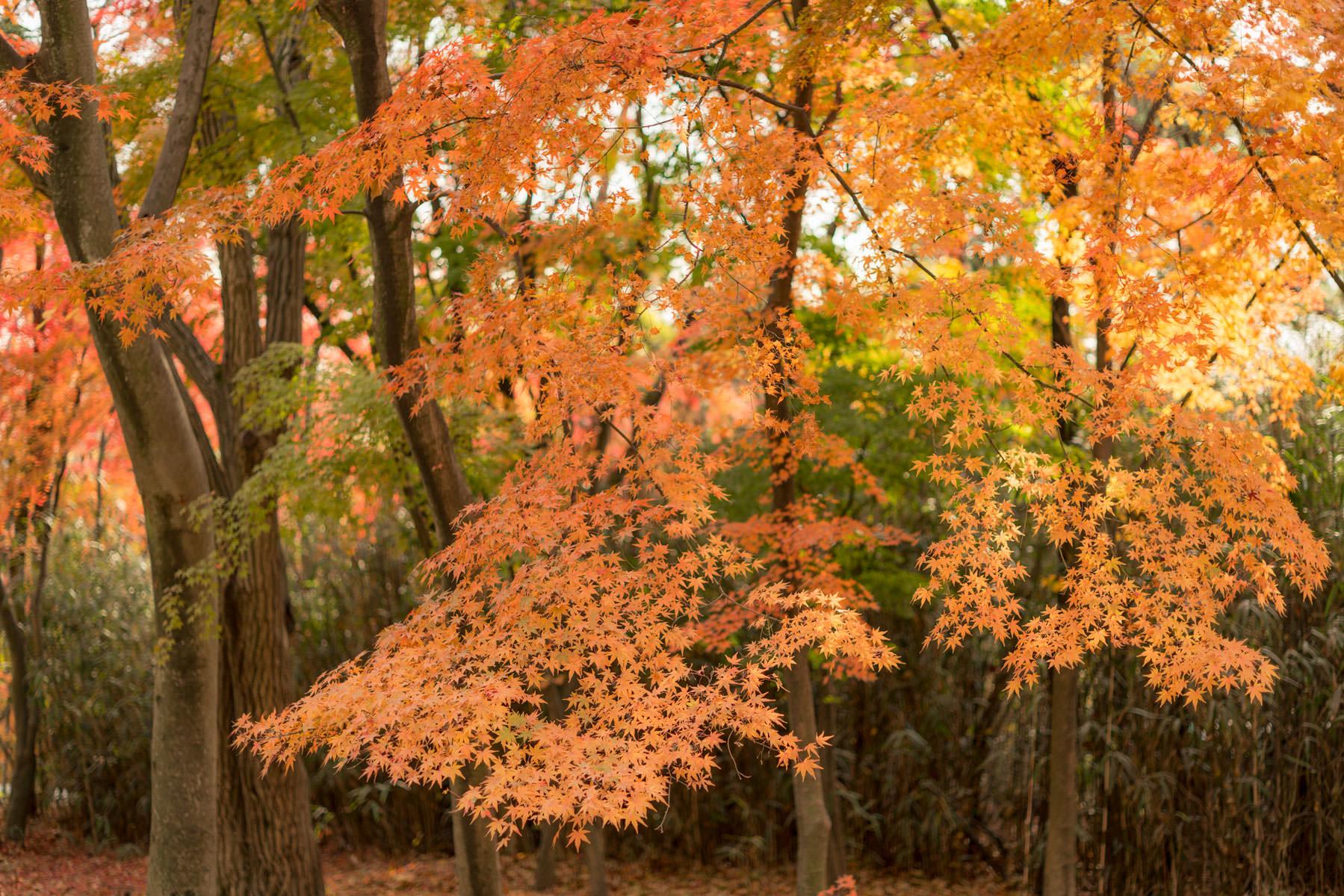
Our visit to a small section of the expansive Namsan mountain range nearby involved an early morning walk, with the now customary steep ascent and descent, taking in wonderful ancient statues, monasteries and temples, seemingly scattered amongst the woodland. Namsan also boasts some particularly fine Korean Pine trees. I discovered just how hard they are to photograph successfully on a clear sunlit day, without any of the atmospheric mist that accompanies so many of Bae Bien-U’s wonderful photographs of these impressive trees. It was fun trying though!
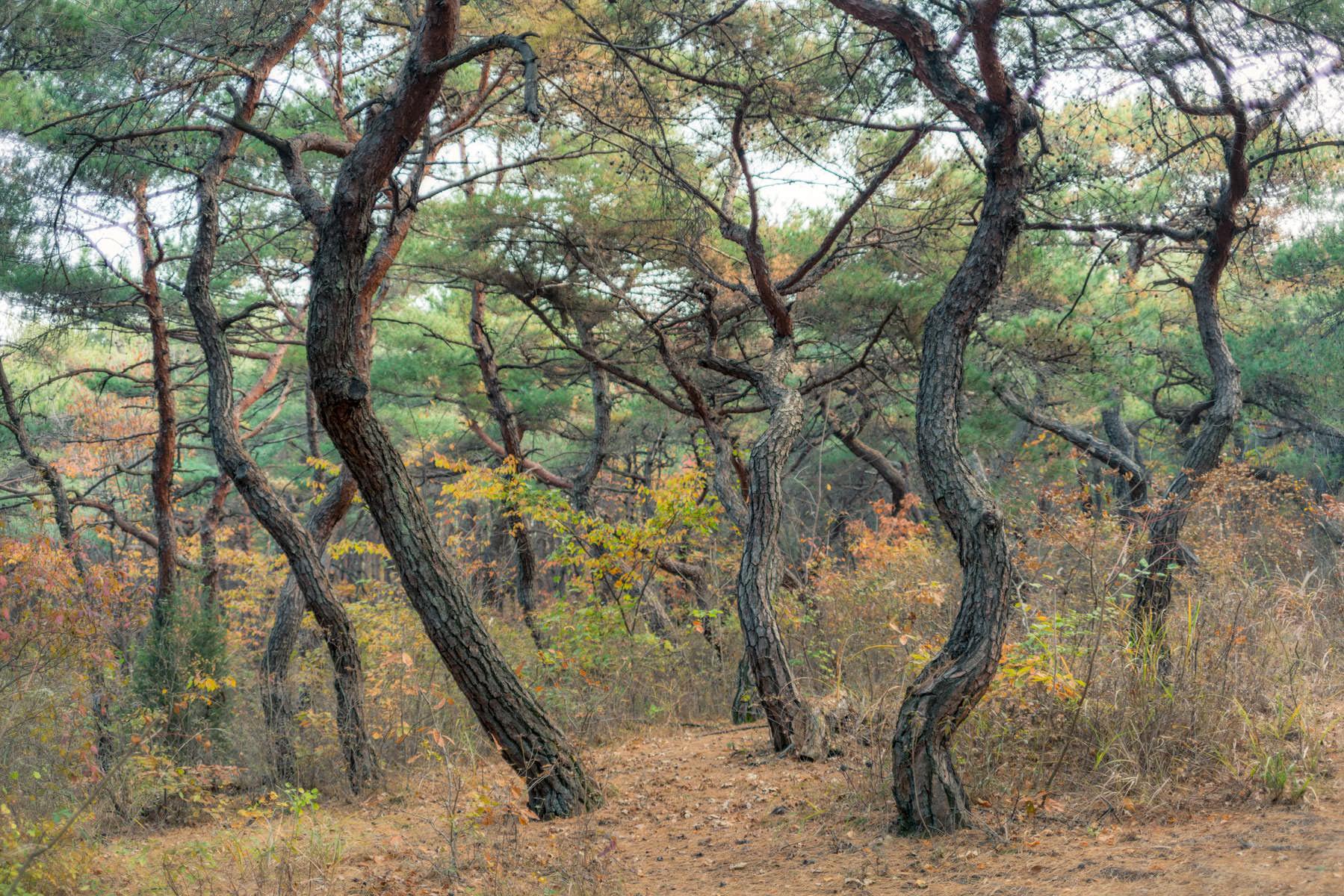
Next we took the short bus ride to Busan, the second city of South Korea. The main reason for our visit was to visit the burial place of some of the UN combatants who supported the South in the Korean War. It’s the only United National cemetery in the world and we were taken aback by the scale and grandeur of the place. Walking around the ground, reading the gravestones and just taking in the atmosphere, was an almost unbearably moving experience. Seeing the list of name after name on the Wall of Remembrance really hit home the extent of the sacrifice made by so many. Of the 40,896 listed, 36,492 were from the USA – an unthinkable statistic.
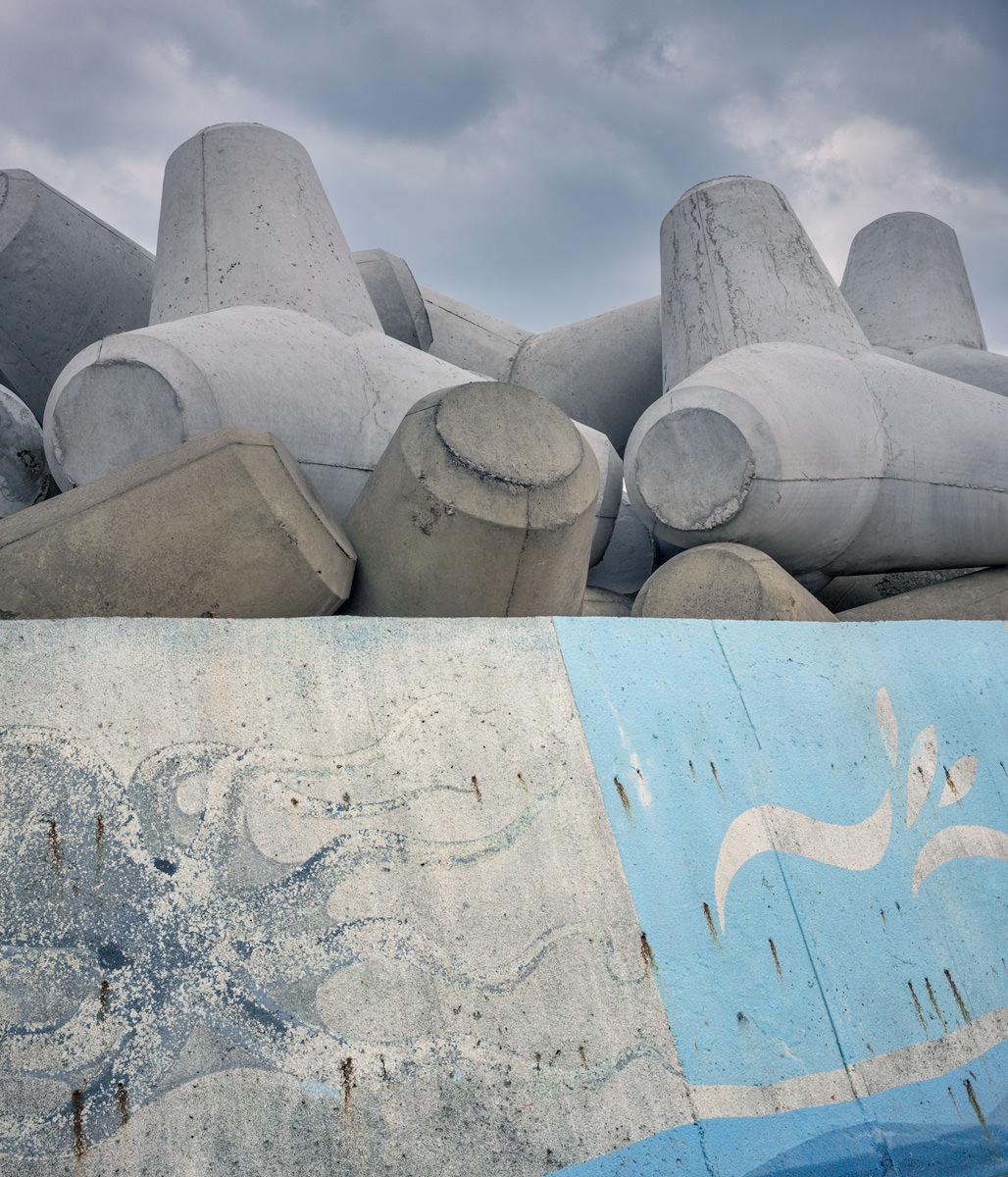
Our next location involved a flight over the Korean Strait to the island of Jeju, home to South Korea’s highest peak. We were keen to explore the island and hired a car to allow us more freedom. We found most areas a little too built up for our liking and, with hindsight, I wish we’d dedicated a full day to climbing to the top of mount Hallasan, an impressive looking shield volcano.
We walked much of the way on our last day, but did not have time to do the whole route. It was a fabulous walk, however, through dense forest and then up, steeply (of course) onto higher ground, where vegetation was more scrub-like and we also encountered snow and some extremely friendly large-billed crows. As ever, we had the place to ourselves for our early morning walk up, but passed an incredible number of (mostly) Japanese tourists hiking up, as we went back down.
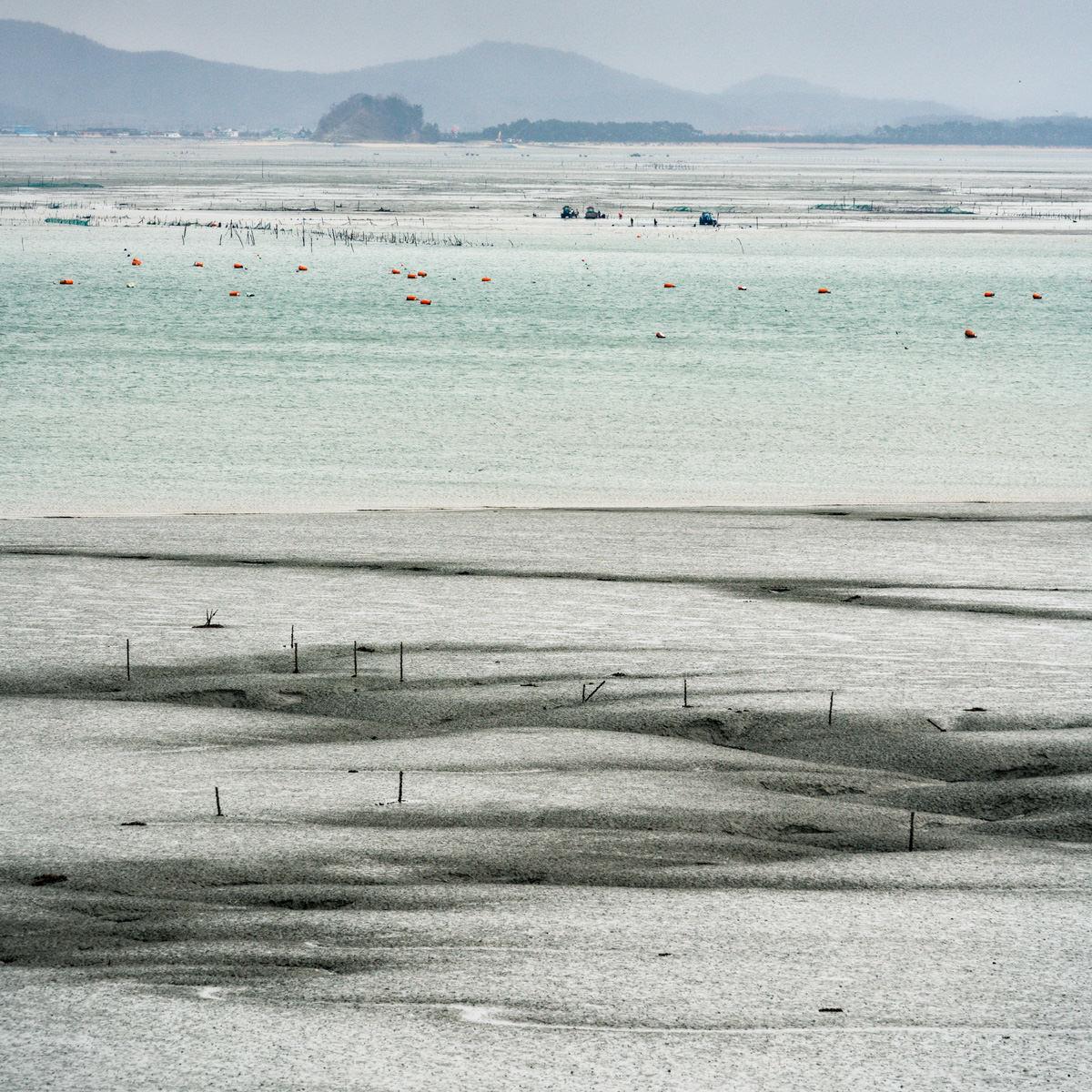
Time was running out and, after flying back to the mainland, we decided to play a bit of a wild card and visit an area we’d heard nothing about, but that promised to be a bit more of quiet, hidden corner. Byeonsanbando national park, situated on a peninsula on the west coast, is South Korea’s only park that contains both mountains and coastal scenery. We stayed in a delightful little apartment overlooking the tidal flats on the southern shores of the park.
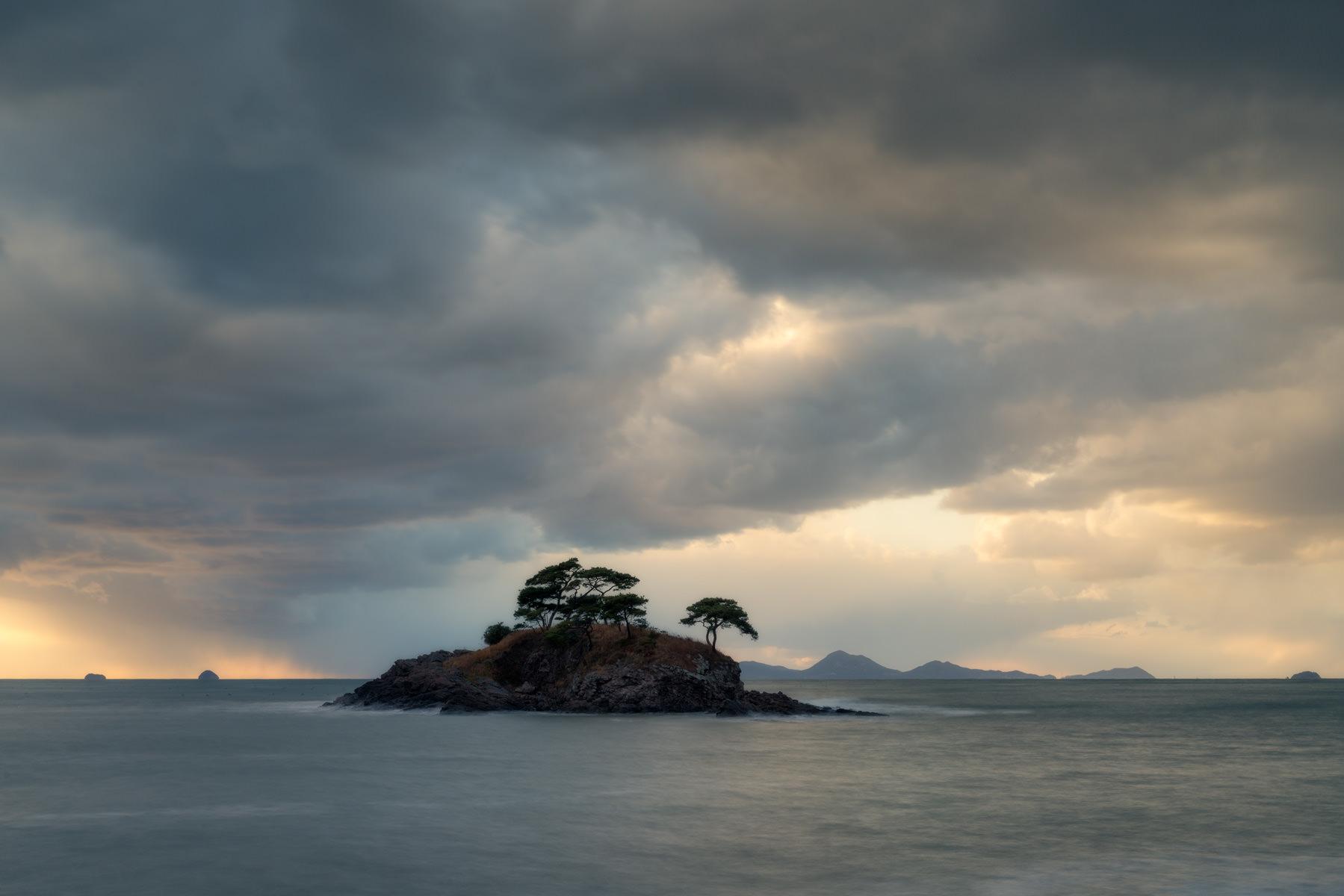
We’d hired a car again and this allowed us to visit a number of locations, including expansive beaches, views over tiny islands, cliffs and yet more stunning mountainous woodland. Perhaps the most extraordinary thing we saw was the Saemangeum sea wall – the world’s longest man-made dyke, measuring a massive 21 miles and, arguably, the largest civil engineering project on the planet. You’d probably need a drone to make anything of it photographically and it was hard not to fear about the environmental impact of such a structure and the resultant land reclamation, but it was certainly an impressive sight.
It was a wonderfully relaxing place to visit before making our way back to Seoul – this time by bullet train – where we witnessed the immaculate staff dutifully bowing to passengers every time they walked past. We had one final day in the capital, before taking our flight home. After catching up with our friends, we decided to head off for one final walk in Bukhansan national park on the northern edge of the city. We found ourselves on the usual steep incline, amongst forest and rocky outcrops, completely hidden from the high rise buildings just to our south. What did surprise us was that, for the first time, the path was fairly minimal and often hard to follow.
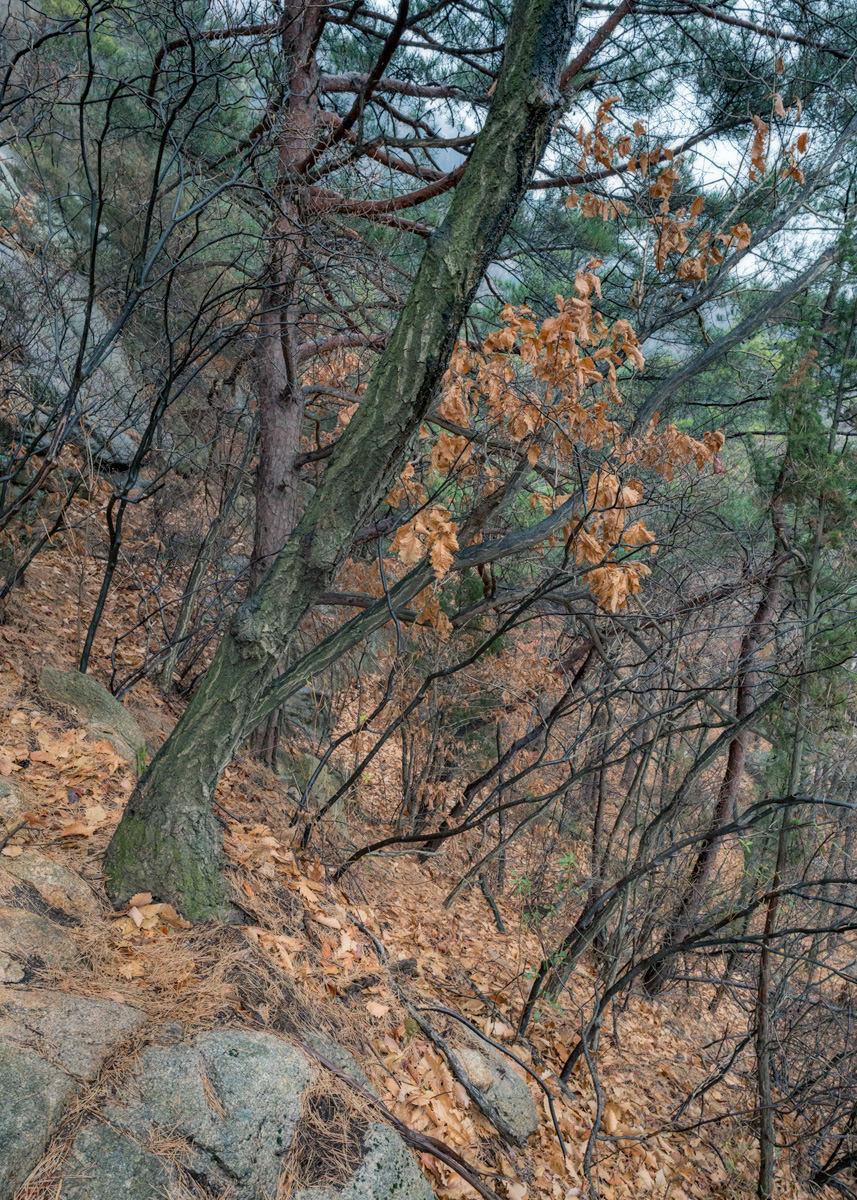
After an hour or so the weather started to get a little ominous and we decided to head back. Not long thereafter, thunder and lightning – not what you want when crossing rocky terrain in amongst the mountains. We rushed down as quickly as we could – too quickly, it turned out, as I managed to fall on the worst section – a very steep rocky traverse, with a handrail, but no path as such. I’m sure it could have been much worse, but I managed to catch one foot in the rock, twisting my knee one way and ankle the other. It felt pretty serious but, thankfully, I was just able to hobble the rest of the way down. Equally thankfully, all my camera gear was safely packed away when I fell.
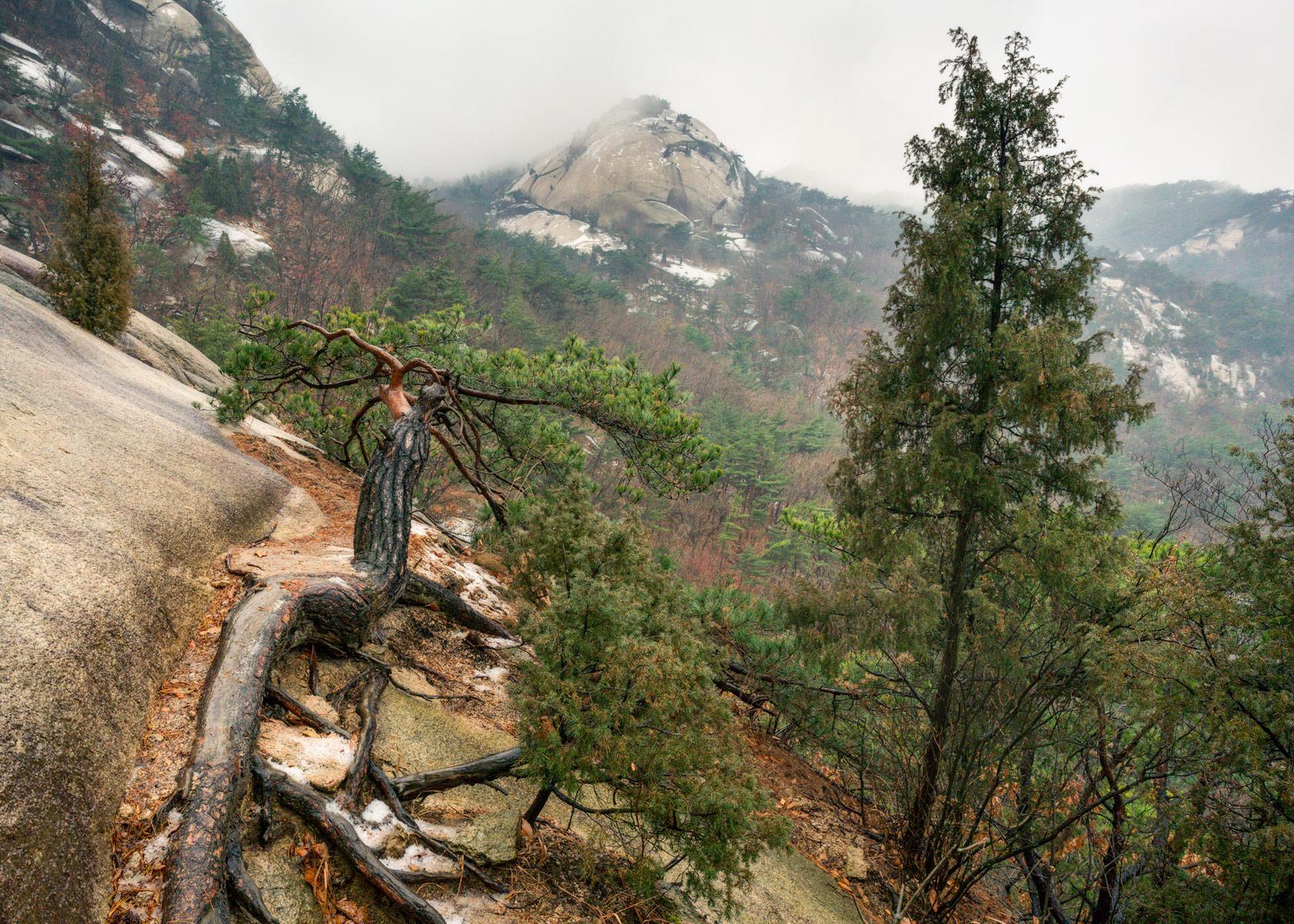
It wasn’t the best end to the holiday but I was so glad not to have had that experience at the start. We’d have missed out on so much of the incredible scenery and experiences we’d enjoyed over the previous weeks. We found South Korea a fascinating place to visit. There’s no doubt it is an extremely photogenic country, although I was of course only really able to scratch the surface on a trip such as this. Autumn is a great time to visit but springtime would be equally wonderful, quite possibly with slightly more atmospheric weather as well. Certainly a location I would recommend.
This article was originally published in Landscape Photography Magazine in April 2018. The ligaments in my knee and ankle took a ridiculously long time to heal - but thankfully they have eventually done so!
